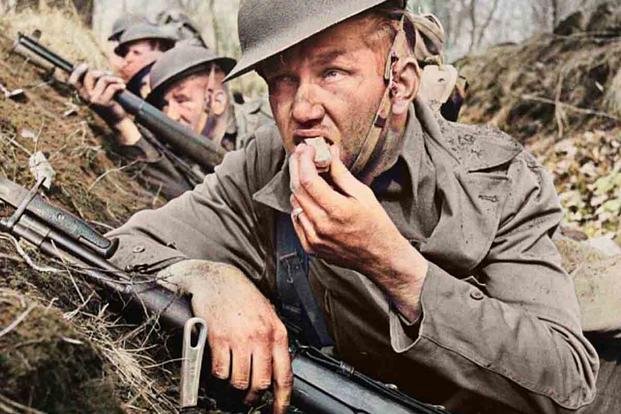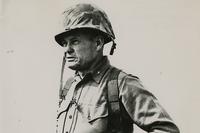Troops who have a beef with the modern-day military ration should instead be counting their lucky stars. The original K-ration made for World War II was much, much worse. The biscuit was so hard that biscuit makers complained about it.
And if you think today’s MREs are tough on your bowels, try eating something that can break the machinery trying to make it. It’s no wonder the creator of the K-ration later became an evangelist for eating better.
The development of field nutrition has come a long way since the early days of mobile warfare. During World War II, the U.S. Army needed a nonperishable, compact way to feed troops who were constantly on the move in this new kind of warfare. So they tapped Dr. Ancel Keys, a physiologist from the University of Minnesota, to develop the basic unit of food for men fighting the war. Keys came through, and the K-ration was born.
As a scientist and expert in hygiene and nutrition, Keys was concerned (rightly) with not just giving soldiers the necessary calories needed to fight a war on two fronts. He also wanted to ensure they were getting the proper nutrition.
Flavor placed a distant third. At least they got cigarettes, right?
Keys went to Witt’s, a local grocery store, and he picked out items that might fit the bill, including hard biscuit, dry sausage and chocolate bars. He formed them into meals fitting the Army’s requirements and tested them out on a few soldiers at Fort Snelling, Minnesota.
The result was “edible.” But it was a good start. Keys’ design was only supposed to provide a paratrooper with enough calories in case he missed a meal and never was meant for more than 15 meals. The next iteration featured the aforementioned biscuit, which was a mixture of grains mixed with dried meat that either could be eaten or mixed into hot water to make a porridge.
The result of this effort was edible, but some troops opted to take a pass on this meal. So did the Army. When the K-ration officially was adopted, they had worked out the kinks, and one “ration” consisted of three meals, each with a can of meat, biscuits, beverage powder and a candy snack -- all in a package the size of a Cracker Jack box.
A fruit bar was added later, because humans need fiber. Cheese and cheese with bacon also were added because this is America. It also included everything else needed for after the meal, including toilet paper.
The problem with the K-ration’s intended design, like all military plans, is that it didn’t survive contact with the enemy. The vitamins and minerals in it weren’t enough for long-term use. The K-ration wasn’t intended for long-term use, but that’s what happened when the Army started fighting the enemy. To make matters worse, eating the same thing over and over gets old pretty fast. The K-ration did not live long after World War II.
While Keys is credited with the design of the first K-rations, his food science life didn’t stop there. Toward the end of World War II, he began to believe that starvation soon would be rampant in the countries that saw the brunt of the fighting. He conducted the now-famous Minnesota Starvation Experiment to discern the effects of starvation on the body and mind while learning the proper way to re-feed people to get them back into shape. This would come in handy later in rebuilding Europe and Japan.
Keys also went on to research the causes of heart disease in humans, using the diets of Minnesota businessmen as his initial test study. He believed that solid animal fats were the causes of heart disease in humans and later conducted a study of seven countries and their eating habits to test his theory.
In 1958, he recruited scientists in the United States, Finland, the Netherlands, Greece, Japan, Italy, Croatia and Serbia to monitor and track the health and nutrition of test subjects there. To him, the results were conclusive: Saturated fats have a detrimental effect on the human heart. His findings have been the cause for dispute pretty much ever since, between scientists and laymen.

Don’t believe me? Check out Twitter, where people still hate on him for all sorts of reasons, and not one of them is the K-ration.
But Keys was convinced, and advocated a diet consistent with what we know today as the “Mediterranean Diet,” which he believed had an inverse effect on heart disease. The biggest proof of this fervent belief was that he moved to the village of Pioppi on Italy’s southwest coast, where he spent most of the remainder of his life.
Ancel Keys died in 2004 just two months shy of his 101st birthday, a Mediterranean Diet evangelist to the very end.
-- Blake Stilwell can be reached at blake.stilwell@military.com. He can also be found on Twitter @blakestilwell or on Facebook.
Want to Learn More About Military Life?
Whether you're thinking of joining the military, looking for fitness and basic training tips, or keeping up with military life and benefits, Military.com has you covered. Subscribe to Military.com to have military news, updates and resources delivered directly to your inbox.
















